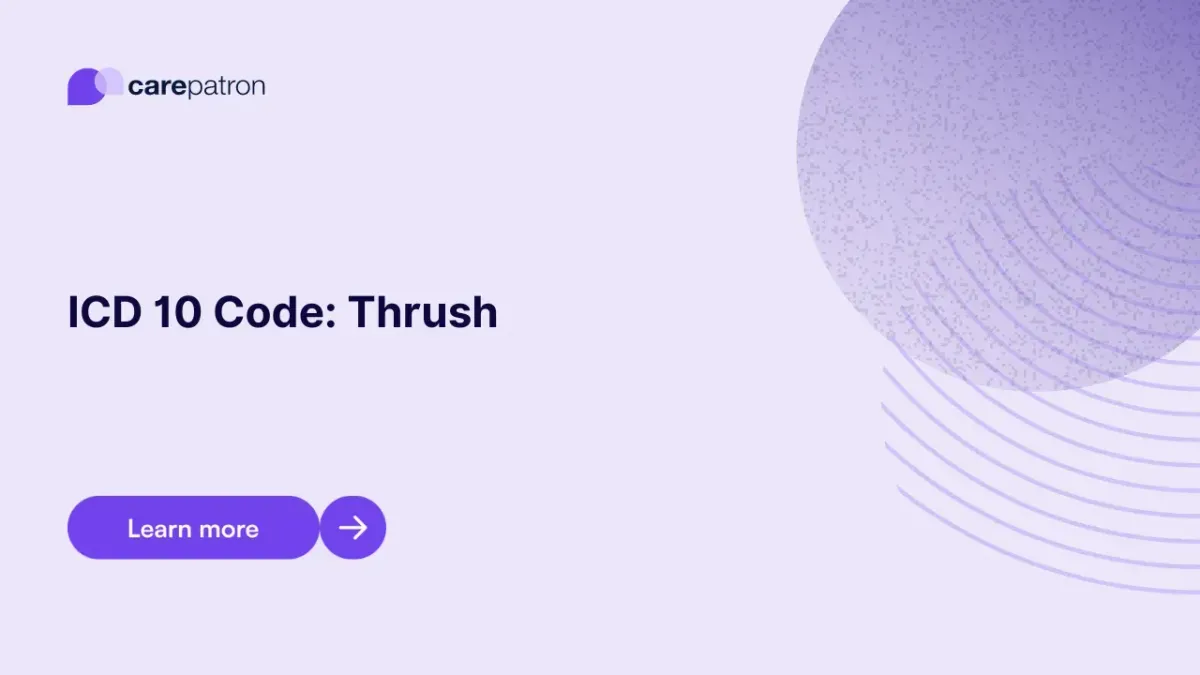
Thrush ICD-10-CM Codes
Learn about the different thrush ICD-10-CM codes you can use through this guide.
Use Code
Commonly asked questions
Thrush is a fungal infection caused by an overgrowth of Candida, often appearing as white patches in the mouth or affecting the genital area.
Common symptoms include white patches, redness, soreness, and a burning or itchy sensation in the affected area.
Yes, thrush can cause pain, especially when eating or swallowing, depending on the area affected.
EHR and practice management software
Get started for free
*No credit card required
Free
$0/usd
Unlimited clients
Telehealth
1GB of storage
Client portal text
Automated billing and online payments
